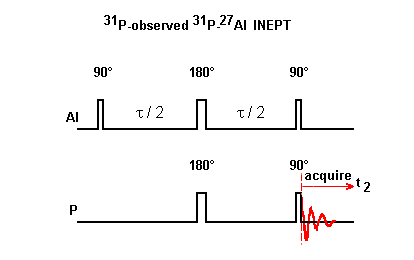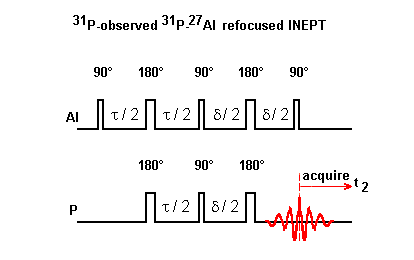Insensitive Nuclei Enhanced by Polarization Transfer
Morris and Freeman introduced INEPT pulse sequence for enhancing the line intensity of low gyromagnetic ratio nuclei submitted to J-couplings. The enhancement arises from the transfer of nuclear spin polarization from non-observed spins to the observed spins. The method is independent of relaxation phenomena.
Since J-couplings are not eliminated by MAS, Fyfe and coworkers applied coherence transfer experiments based on heteronuclear J-couplings in the solid state for both spin-1/2 (31P) and quadrupole nuclei (27Al). In this case, quadrupole nuclei are the non-observed spins.
A spin-echo sequence is applied to the 27Al nuclei with a delay tau/2. For two coupled spin-1/2 nuclei, tau/2 = 1/(4J). In a crowded INEPT spectrum, overlapping antiphase multiplets make the spectrum difficult to interpret.

In a refocused INEPT experiment, an additional spin-echo sequence is added after the transfer pulses before the acquisition. The J modulation is refocused by this second spin-echo sequence, resulting in-phase multiplets. The proper setting of the delay delta allows spectral editing.

Kao and Grey demonstrated that the 31P INEPT signals strongly depend on whether or not the 27Al pulses are applied synchronously with the rotor period, and on the duration of the 27Al pulses.
